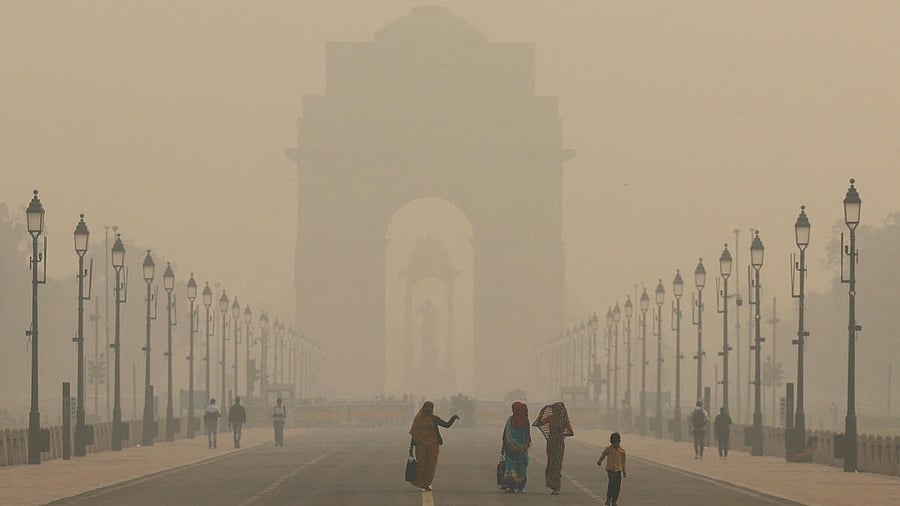
An image showing air pollution in Delhi
Credit: Reuters File Photo
New Delhi: Thirteen of the world’s 20 most polluted cities are in India with Byrnihat – an industrial town on the Assam-Meghalaya border – topping the list followed by Delhi, according to a new global air pollution assessment report released on Tuesday.
While New Delhi retains the top slot as the world’s most polluted capital, India’s overall PM2.5 level saw a marginal improvement compared to last year, placing the country at the fifth slot in the global ranking, says the World Air Quality Report 2024, prepared by Swiss air quality technology company IQAir.
The 20 cities with most polluted air include Byrnihat, Delhi, Mullanpur (Punjab), Faridabad, Loni, Gurugram, Ganganagar, Greater Noida, Bhiwadi, Muzaffarnagar, Hanumangarh and Noida.
In 2023, the Central Pollution Control Board first declared Byrnihat as the most polluted urban centre in the country. The high level of pollution in Byrnihat is due to emissions from local factories, including distilleries and iron and steel plants.
Barring three, all other most polluted cities in the top 20 are either in India or Pakistan. The trend holds even when the net is cast wider to bring more cities under evaluation - out of top 50 cities with poorest quality of air, as many as 44 are either in India or Pakistan.
The four nations preceding India are Chad, Bangladesh, Pakistan and Congo.
The report evaluates the concentration of PM2.5 – the most dangerous component of air pollution that goes deep inside the lungs and travels to the bloodstream.
Public health researchers have earlier claimed that an estimated 15 lakh deaths in India each year are triggered by such superfine toxic particles when the country’s annual mortality figures are compared with the WHO safe limits for such particles.
According to IQ Air’s new assessment report, the air pollution level in Delhi has worsened, with the annual average PM2.5 concentration rising from 102.4 micrograms per cubic metre in 2023 as against 108.3 micrograms per cubic metre in 2024.
The New Delhi municipal area also maintained consistently high pollution levels, with an annual average of 91.6 micrograms per cubic metre, nearly unchanged from 92.7 microgram in 2023, making it the world’s most polluted capital.
A thin silver line, however, is a 7 per cent decline in India’s PM2.5 concentration, putting the country at the fifth slot, down from third the previous year. Yet six of the world’s 10 most polluted cities are in India.
Severe pollution episodes persisted in 2024, particularly in northern states. January air quality was, especially, poor in Delhi and Himachal Pradesh.
Air quality deteriorated sharply in Manipur in October, while November saw extreme pollution levels in Delhi, Punjab, Chandigarh, Haryana, and Himachal Pradesh with crop stubble burning remaining a major contributor to PM2.5 levels, accounting for 60 per cent of pollution during peak periods.
Overall, 35 per cent of Indian cities reported annual PM2.5 averages exceeding 10 times the WHO guideline, says the report.
The Indo-Gangetic Plain remains a pollution hotspot, where meteorological factors trap pollutants and exacerbate winter smog. Cities like Delhi and Lahore frequently experience hazardous conditions, with seasonal spikes in pollution leading to emergency measures such as school closures and public space shutdowns.
